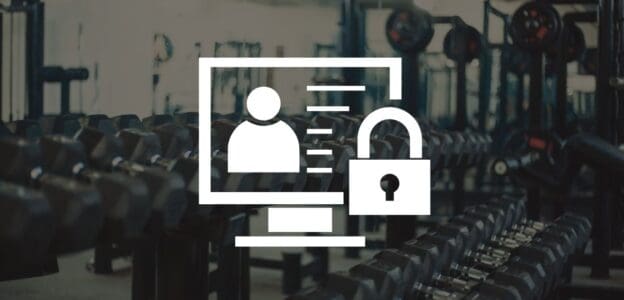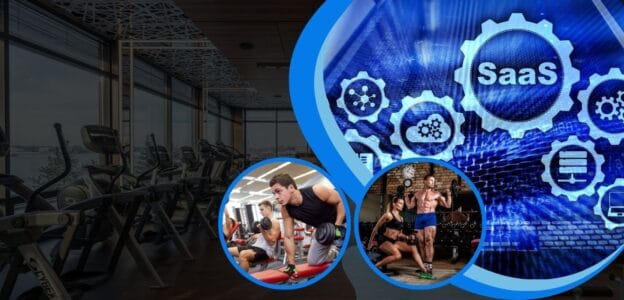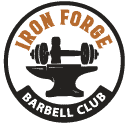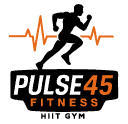Starting a gym management system project is a significant step towards enhancing operational efficiency and member satisfaction. The success of this endeavour hinges on a thorough understanding of your gym’s unique requirements and the selection of a system that aligns with these needs.
From ensuring seamless integration with existing tools to maintaining robust data security, every aspect plays a crucial role in the system’s overall effectiveness. Addressing these foundational elements can set the stage for a successful implementation supporting current operations and future growth.
Whether you are planning a new gym management system project or upgrading an existing system, several key elements must be considered to ensure a successful implementation. This detailed article will explore these elements and offer insights into starting a Gym Management System project.
What is Gym Management System
A Gym Management System (GMS) is a comprehensive software solution designed to streamline and automate various administrative and operational tasks associated with managing a gym or fitness center. It provides tools and functionalities to manage memberships, scheduling, billing, communication, and reporting, among other aspects of gym operations.
Key Components of a Gym Management System
A Gym Management System (GMS) encompasses several key components designed to streamline gym operations and improve efficiency. From managing memberships and scheduling to handling billing and communications, these features work together to create a seamless experience for both staff and members.
Membership Management
Handles the entire lifecycle of gym memberships, including sign-ups, renewals, cancellations, and tracking member details. It often includes features for managing different membership plans, processing payments, and maintaining member profiles.
Scheduling and Booking
Manages class schedules, personal training sessions, and facility bookings. This feature typically allows members to book appointments online, view class schedules, and receive automated reminders.
Billing and Payments
Automates the billing process by integrating with payment gateways to handle transactions securely. This includes features for recurring payments, invoicing, and financial reporting.
Check-In and Access Control
Manages member check-ins and controls access to different areas of the gym. This can involve key cards, mobile apps, or biometric systems to ensure secure and efficient access.
Reporting and Analytics
Provides tools for generating reports and analyzing data related to memberships, finances, class attendance, and staff performance. This helps gym owners and managers make informed decisions and identify areas for improvement.
Communication Tools
Facilitates communication between gym staff and members through features like email, SMS, and in-app notifications. This can be used for appointment reminders, promotions, and feedback collection.
Integration Capabilities
It often integrates with other systems, such as accounting software, customer relationship management (CRM) systems, fitness equipment, and marketing tools, to enhance functionality and streamline operations.
Benefits of a Gym Management System
Implementing a Gym Management System significantly enhances operational efficiency by automating routine tasks and providing valuable data insights. This leads to improved member satisfaction, better financial management, and the ability to make informed decisions to drive business growth.
Improved Efficiency
Automates routine tasks and processes, reducing administrative workload and minimizing errors.
Enhanced Member Experience
Provides members with a seamless experience for booking classes, managing their accounts, and accessing gym facilities.
Data-Driven Insights
Offers valuable insights through reporting and analytics, helping gym owners make data-driven decisions.
Increased Revenue
Optimizes billing and payment processes, leading to better financial management and increased revenue.
Key Elements to Consider When Starting a Gym Management System Project
If you’re starting from scratch, there are several key elements to consider to ensure the success of your gym management system project. The following are the elements to consider when starting a gym management system project.
Defining Project Objectives
The foundation of a successful Gym Management System project lies in clearly defining the objectives and understanding the specific needs of your gym.
Identify Goals
Determine the primary goals of implementing the GMS. Common objectives include increasing operational efficiency, enhancing member engagement, automating billing and payment processes, and integrating with other business systems.
Stakeholder Input
Engage with key stakeholders, including gym managers, staff, and members, to gather input on their needs and expectations. This will help identify the features and functionalities that will provide the most value.
Scope and Requirements
Clearly outline the project’s scope, including the required features and capabilities. This may involve creating a detailed requirements document that serves as a blueprint for developing or selecting the GMS.
Budget and Timeline
Establish a realistic budget and timeline for the project. Consider software acquisition or development costs, implementation, training, and ongoing maintenance. Create a project plan with milestones and deadlines to track progress.
2. Selecting Key Features and Functionalities
A Gym Management System should encompass a range of features tailored to the needs of your gym. Here are some essential functionalities to consider:
Membership Management
This core feature should handle all aspects of membership administration, including sign-ups, renewals, cancellations, and plan management. Look for features such as automated membership tracking, customizable membership plans, and integration with payment gateways.
Scheduling and Booking
Implement a robust scheduling system for managing class schedules, personal training sessions, and facility bookings. The system should support online booking, automated reminders, and integration with staff schedules.
Billing and Payments
Integrate with payment processors to handle transactions securely. Features should include automated billing, invoicing, recurring payments, and financial reporting. Ensure the system supports various payment methods, including credit/debit cards and digital wallets.
Check-In and Access Control
Enable efficient member check-ins and manage access to different areas of the gym. For secure and streamlined access control, consider key cards, mobile apps, or biometric systems.
Reporting and Analytics
The GMS should provide detailed reporting and analytics capabilities. This includes reports on membership trends, financial performance, class attendance, and staff productivity. Advanced analytics can help make data-driven decisions and identify areas for improvement.
Communication Tools
Incorporate features for member communication, including email, SMS, and in-app notifications. This can be used for appointment reminders, promotional offers, feedback collection, and general communication.
3. Ensuring User Experience and Interface
A positive user experience (UX) and intuitive user interface (UI) are critical for successfully adopting the gym management system project.
Intuitive Design
The system should have a user-friendly interface with clear navigation and easy-to-use features. A well-designed UI minimizes the learning curve for staff and members and reduces the likelihood of errors.
Customization
Offer customization options to tailor the GMS to your gym’s branding and operational needs. This could include customizable dashboards, color schemes, and settings to match your gym’s unique requirements.
Mobile Accessibility
Ensure that the GMS is accessible via mobile devices. This allows members to manage their accounts, book classes, and check schedules using their smartphones. A mobile-friendly design enhances convenience and engagement.
4. Integration Capabilities
Integrating the GMS with other systems and tools can enhance its functionality and streamline operations.
Accounting Software
Integrate with accounting software to automate financial management and generate accurate reports. This integration helps in managing expenses, revenue, and financial forecasting.
CRM Systems
Connect with customer relationship management (CRM) systems to track member interactions, manage communications, and improve customer service. Integration can facilitate targeted marketing and personalized member engagement.
Fitness Equipment
Integrate with fitness equipment to track workout data, monitor performance, and sync information with member profiles. This feature can enhance the member experience and provide valuable insights into workout habits.
Marketing Tools
Link with marketing tools for managing email campaigns, social media, and promotional activities. Integration can facilitate targeted marketing efforts and improve member acquisition and retention.
5. Addressing Data Security and Compliance
Data security and regulatory compliance are crucial aspects of any digital system, particularly when handling sensitive member information.
Data Encryption
Encryption techniques are used to protect data both in transit and at rest. This ensures that sensitive information, such as member details and financial data, is secure from unauthorized access.
Access Controls
Implement role-based access controls to restrict access to sensitive information based on user roles and responsibilities. This helps maintain data privacy and prevent unauthorized access.
Regulatory Compliance
Ensure the GMS complies with relevant data protection regulations, such as GDPR, HIPAA, or local data protection laws. Compliance is essential for safeguarding member data and avoiding legal issues.
Backup and Recovery
Establish a reliable backup and recovery process to protect data against loss or corruption. Regularly test backup procedures to ensure data can be restored quickly and effectively in an emergency.
6. Evaluating Vendor Options
Choosing the right vendor is critical in the gym management system project. Consider the following factors when evaluating potential vendors:
Reputation and Experience
Look for vendors with a strong reputation and extensive experience in the fitness industry. A proven track record indicates reliability and expertise in delivering quality systems and support.
Customer Support
Assess the vendor’s customer support services, including availability, response times, and support channels. Effective customer support is crucial for addressing issues and ensuring smooth operation.
Cost and Licensing
Understand the cost structure, including licensing fees, subscription models, and additional upgrades or support costs. Compare pricing and features across different vendors to find the best value for your investment.
Implementation and Training
Review the vendor’s approach to implementation and training. Ensure that staff receive adequate training and that the system can be integrated seamlessly into existing operations.
7. Conducting Testing and Quality Assurance
Thorough testing ensures the GMS functions correctly and meets your requirements.
Functional Testing
Test all GMS features and functions to ensure they work as intended. This includes membership management, scheduling, billing, and reporting.
Usability Testing
Conduct usability testing with end-users to ensure the system is intuitive and user-friendly. Gather feedback and make necessary adjustments to improve the user experience.
Performance Testing
Evaluate the system’s performance under various conditions, including peak usage times. Ensure the system can handle the expected load and provide a smooth user experience.
Security Testing
Perform security testing to identify vulnerabilities and ensure that data protection measures are effective. Address any security issues promptly to safeguard sensitive information.
8. Planning Implementation and Rollout
Careful planning and execution of the implementation process are crucial for successfully implementing the gym management system project.
Phased Rollout
Consider a phased approach to implementation, starting with a pilot phase to test the system in a controlled environment. Gradually expand the rollout to the entire gym to minimize disruption and address any issues.
Data Migration
Planned and executed the migration of existing data to the new system. Ensure data integrity and accuracy during the migration process and test the system with migrated data to verify functionality.
Training and Support
Provide comprehensive training for staff and offer ongoing support during the transition. Address any issues or concerns promptly to ensure a smooth implementation process.
9. Monitoring and Evaluation
Once the gym management system project is live, continuous monitoring and evaluation are necessary to ensure its effectiveness and address any issues.
Performance Metrics
Track key performance indicators (KPIs) to assess the system’s impact on gym operations and member satisfaction. Metrics may include system uptime, user satisfaction, and operational efficiency.
Feedback and Improvement
Gather feedback from users and make improvements based on it. Review system performance regularly and update features as needed to meet evolving needs.
System Maintenance
Perform routine maintenance and updates to ensure the system remains secure, functional, and up-to-date with the latest technology. Regular maintenance helps prevent issues and ensure optimal performance.
Conclusion
Starting a gym management system project is a transformative endeavor that can significantly enhance your fitness facility’s operational efficiency and member experience. By meticulously considering each key element—from defining clear project objectives to ensuring robust data security and selecting the right vendor—you lay a strong foundation for a successful implementation.
The insights provided in this article emphasize the importance of a well-rounded approach that addresses critical aspects such as system features, user experience, integration capabilities, and ongoing evaluation.
Implementing a comprehensive gym management system streamlines day-to-day operations and positions your gym for future growth and adaptability. By leveraging the right tools and technologies, you can optimize administrative processes, improve member satisfaction, and make informed decisions that drive your business forward.
The thoughtful and strategic approach will ensure that your investment yields substantial benefits, setting the stage for sustained success in the competitive fitness industry.
Frequently Asked Questions
Clearly define your goals by identifying your goals with the GMS, such as improving operational efficiency or enhancing member engagement. Gather input from stakeholders to understand their needs and create a detailed scope and requirements document.
To protect sensitive information, implement data encryption, access controls, and regular backups. Ensure compliance with relevant regulations, such as GDPR or HIPAA, to safeguard member data and avoid legal issues.
Assess the vendor’s reputation, experience, customer support, cost structure, and implementation approach. Choose a vendor that offers reliable support, fits your budget, and provides adequate staff training.
Plan the migration carefully by mapping out all data that needs to be transferred. Perform a test migration to check for accuracy and integrity. Ensure data is cleaned and standardized before migration, and have a backup plan in case of issues. Test the system thoroughly with the migrated data to confirm everything functions correctly.
Common challenges include change resistance, data migration, and system integration problems. Address these by providing thorough training, offering support during the transition, and ensuring a well-planned implementation strategy. Engage with the vendor to resolve technical issues promptly.














































